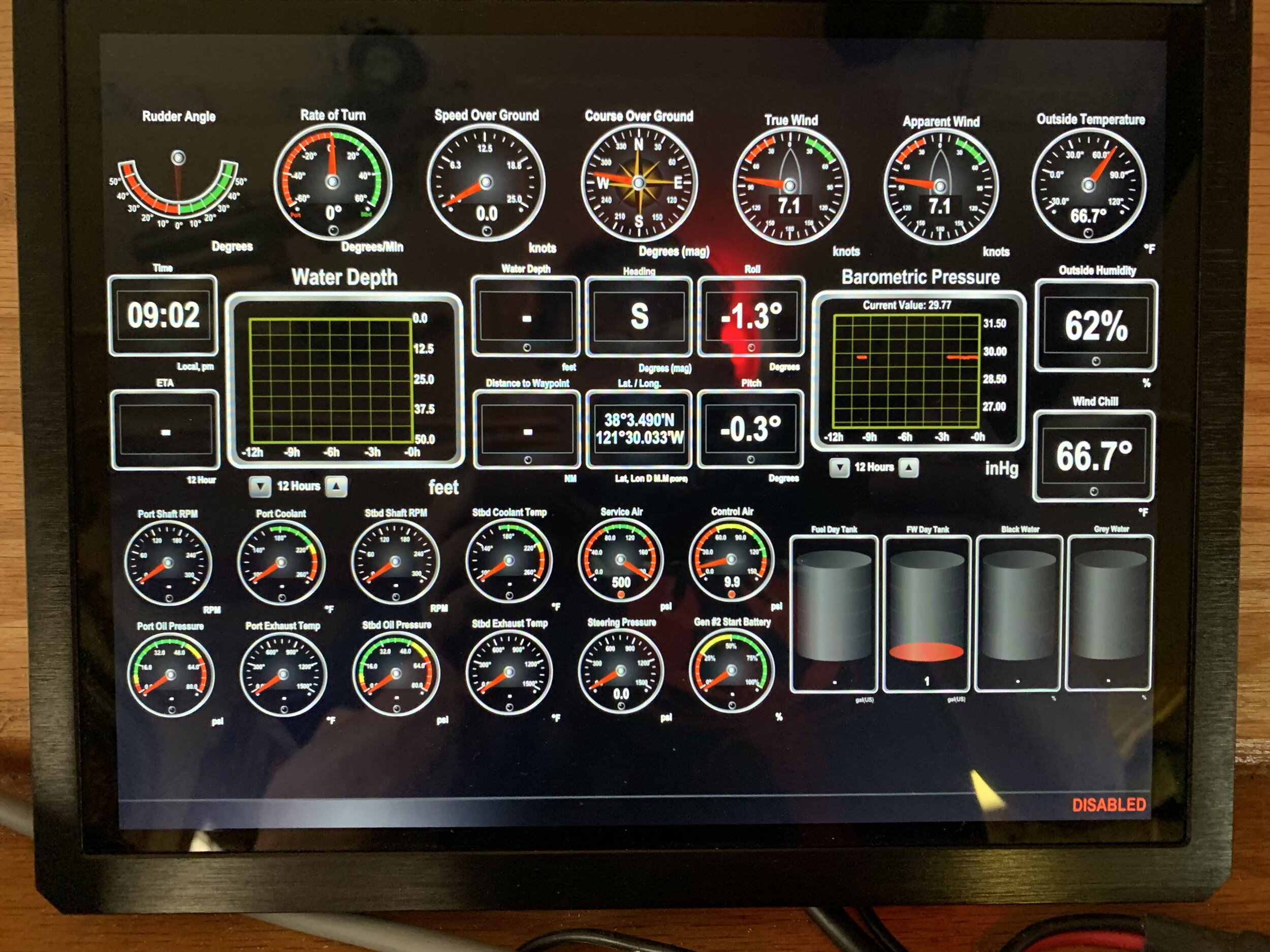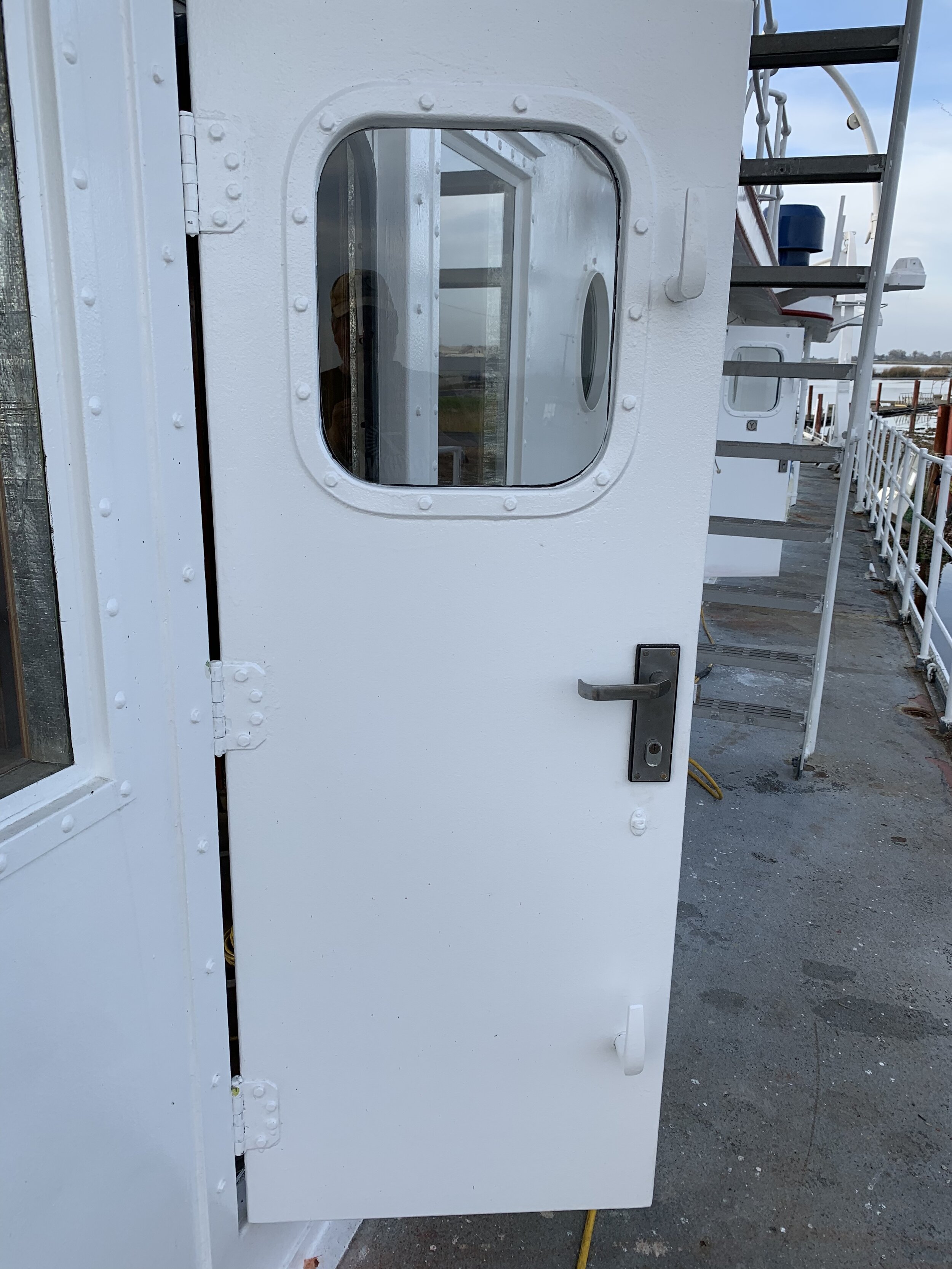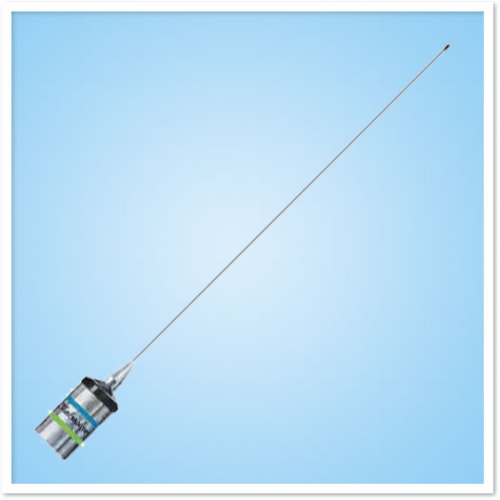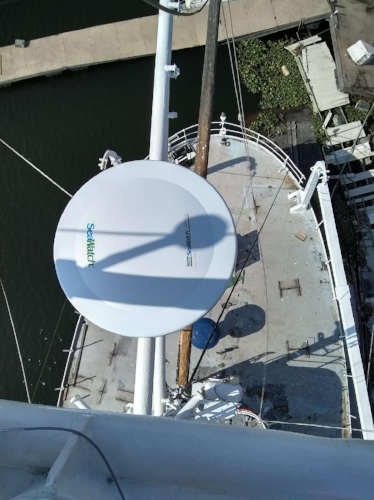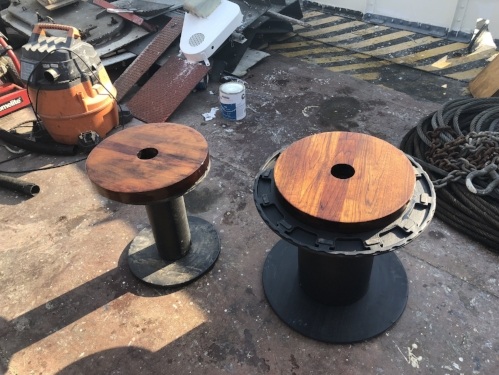In her day, Fir depended on the crew to report problems. As you would expect there are alarms throughout the boat. But, these systems only report locally. So, low oil pressure in a motor would only be reported to the engineers stationed in the engine room. The engineers would then report the problem to the Wheelhouse. Fir has scores of communication terminals scattered throughout the boat that allow a person with a handset to plugin and communicate with the Wheelhouse. The idea was that problems would be assessed locally then verbally forwarded to the Wheelhouse. It is a great system when you have a crew of 75.
Our plan requires a much smaller crew to be viable. Consequently, alarms and problems must be reported directly to the Wheelhouse.
Existing Alarms
Our first effort was to make certain that the existing alarms actually worked. We replaced all the lamps in the warning circuits. We had a hell of a time finding these bulbs in specialty bulb stores. Oddly enough, they are fairly common “appliance bulbs” at Lowes and Home Depot. We then went through the process of tripping each alarm to ensure that they reported correctly.
In addition to the above alarms, there were manual alarm switches for: general alarm, collision, and man overboard. These switches ran to an alarm box which does not appear to work. The manufacturer of the box wants $16,000 to replace the unit which is not in our budget. We suspect that the unit could easily be repaired by a board-level electrician. So…. working on that.
There are also mechanical switches in the galley that allow the fusible links in the galley hood and pull switches to annunciate a fire in the cooking equipment.
The question is: how do we move this information onto the N2K network that serves the entire boat. Maretron makes a black box (RIM100) that is designed to report when a circuit (AC or DC) is energized. It is usually used for motors and lights. We hooked these units to the existing alarm buzzers and warning lights so that an alarm off the existing system creates a network event on our N2K network. Maretron also makes a black box that monitors dry contacts.
We are still working with Maretron on the software side.
New Alarms
In addition to incorporating the existing systems into our N2K network, we have new devices. Again, we chose Maretron. We mounted a low Engine Room Bilge water level detector that will sound before the existing system. We have smoke/fire detectors in various locations within the engine room. We have added carbon monoxide detectors at key locations. We also added motion detectors that cover key passageways.
Monitoring
In this context, we refer to monitoring as the reporting of analogue data. Fir’s engine room has scores of gauges that measure pressure, temperature, and revolutions per minute. Again, none of this information was electronically reported to the Wheelhouse.
Based on reviews, we chose to use the Actisense EMU-1 to monitor each of the main engines (one unit for each motor). Out of the box, these units are designed to monitor a typical boat configuration i.e. RPMs, oil pressure, oil temperature, coolant temperature, etc. All of these types of information are “standard” messages on the N2K network meaning that a modern marine network knows how to treat oil pressure for engine #1. As soon has you associate the sensor with a use, the information pops up on the engine monitoring panel.
Of course, Fir is not typical for what the N2K designers had in mind. We have a lot more sensors than the typical recreational boat. Luckily, the standard allows for many “user defined” messages. One reason that we chose Maretron is that they offer a free software product called N2KAnalyzer. Once loaded on a PC, the software accesses the N2K network through a gateway that allows the PC to “see” all the devices on the network. Below is a screen shot of N2KAnalyzer as we begin the process. Each of the entries below have six channels which is to say they each report the results from six different sensors.
All of this is information is deciphered and put on the N2K network which is carried by a single wire that winds its way around the boat. Anywhere the wire is present, we have the option to drop a display that allows access to all the information for the boat. So, we can drop displays in the captain’s quarters, crew quarters, galley, and owner’s state room with little trouble.
The other great aspect of Maretron is that we have near limitless control over the presentation of the information. All the big marine electronics companies allow you to build your own monitoring screens. But, they are geared toward modern systems. Fir’s main engines make 700-1200 revolutions per minute so a gauge that tops out at 4,000 RPM is really not that helpful. The same is true for oil pressure and fuel pressure which are much lower than most modern systems. Maretron allows you to create a custom scale and set your own yellow and red zones for each gauge. And, there are hundreds of other options.
We have started building about a dozen screens that incorporate and report this type of data. No doubt that there will be many future revisions. I suspect this is something that you always find yourself tweaking. Luckily, Maretron allows for this. Below is one screen in development. Obviously, this is a broad and complicated topic so expect to see future posts as we start to further develop the idea.


